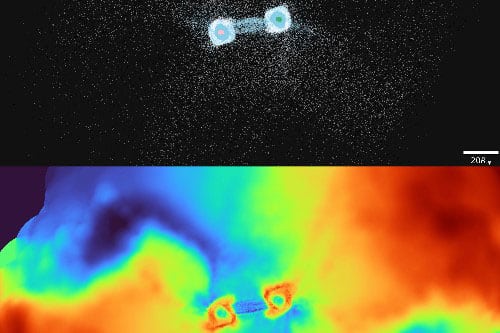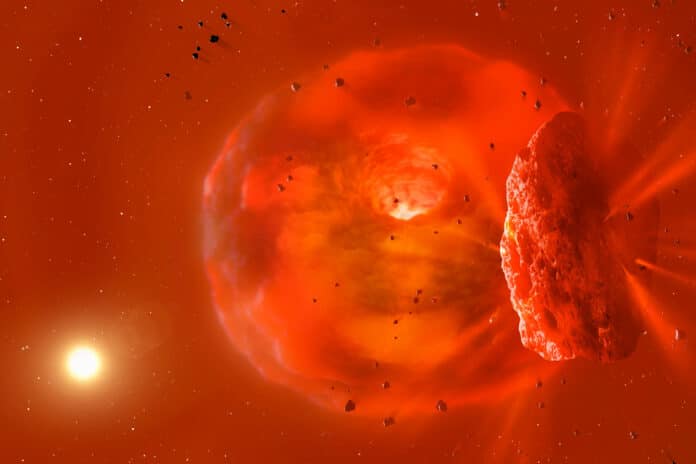Around developing stars, planets generate rotating rings of dust and gas, some of which can smash in massive impacts after the gas component is eliminated.
An amateur astronomer examining the star’s light curve found something odd, which led to the formation of a multinational team of astronomers. The system’s brightness at infrared wavelengths had doubled three years before the star’s visible light fading, according to the data.
Co-lead author Dr Matthew Kenworthy, from Leiden University, said: “To be honest, this observation was a complete surprise to me. When we originally shared the visible light curve of this star with other astronomers, we started watching it with a network of other telescopes.”
“An astronomer on social media pointed out that the star brightened up in the infrared over a thousand days before the optical fading. I knew then this was an unusual event.”
An extensive study of the star was conducted by a network of professional and amateur astronomers, who also kept track of variations in the star’s brightness over the following two years. The constellation of telescopes that first noticed the star fading at visible wavelengths gave the star its designation, ASASSN-21qj.
The scientists concluded that the most likely cause of the infrared glow seen by NASA’s NEOWISE mission, which uses a satellite telescope to look for asteroids and comets, was a collision between two ice-giant exoplanets.

Co-lead author Dr. Simon Lock, Research Fellow in Earth Sciences at the University of Bristol, said: “Our calculations and computer models indicate the temperature and size of the glowing material, as well as the amount of time the glow has lasted, is consistent with the collision of two ice giant exoplanets.”
Three years later, the impact’s expanding debris cloud passed in front of the star, which caused the star to lose brightness at visible wavelengths.
The dust cloud is anticipated to begin spreading out along the collision remnant’s orbit over the coming years, and both ground-based telescopes and NASA’s most prominent space observatory, known as JWST, may be able to detect a distinctive scattering of light from this cloud.
The astronomers will keenly monitor the subsequent developments in this system.
Co-author Dr Zoe Leinhardt, Associate Professor of Astrophysics at the University of Bristol, added: “It will be fascinating to observe further developments. Ultimately, the mass of material around the remnant may condense to form a retinue of moons that will orbit around this new planet.”
Journal Reference:
- Kenworthy, M., Lock, S., Kennedy, G. et al. A planetary collision afterglow and transit of the resultant debris cloud. Nature 622, 251–254 (2023). DOI: 10.1038/s41586-023-06573-9
